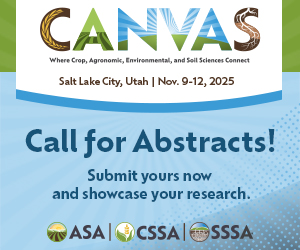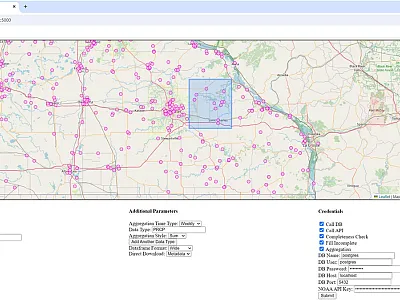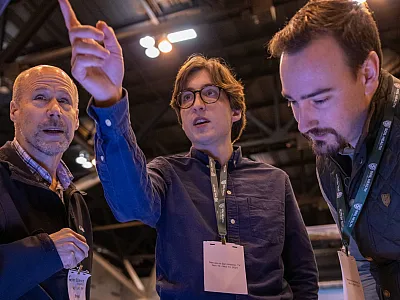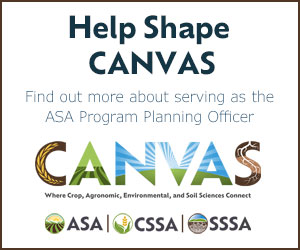Living the ASA Vision
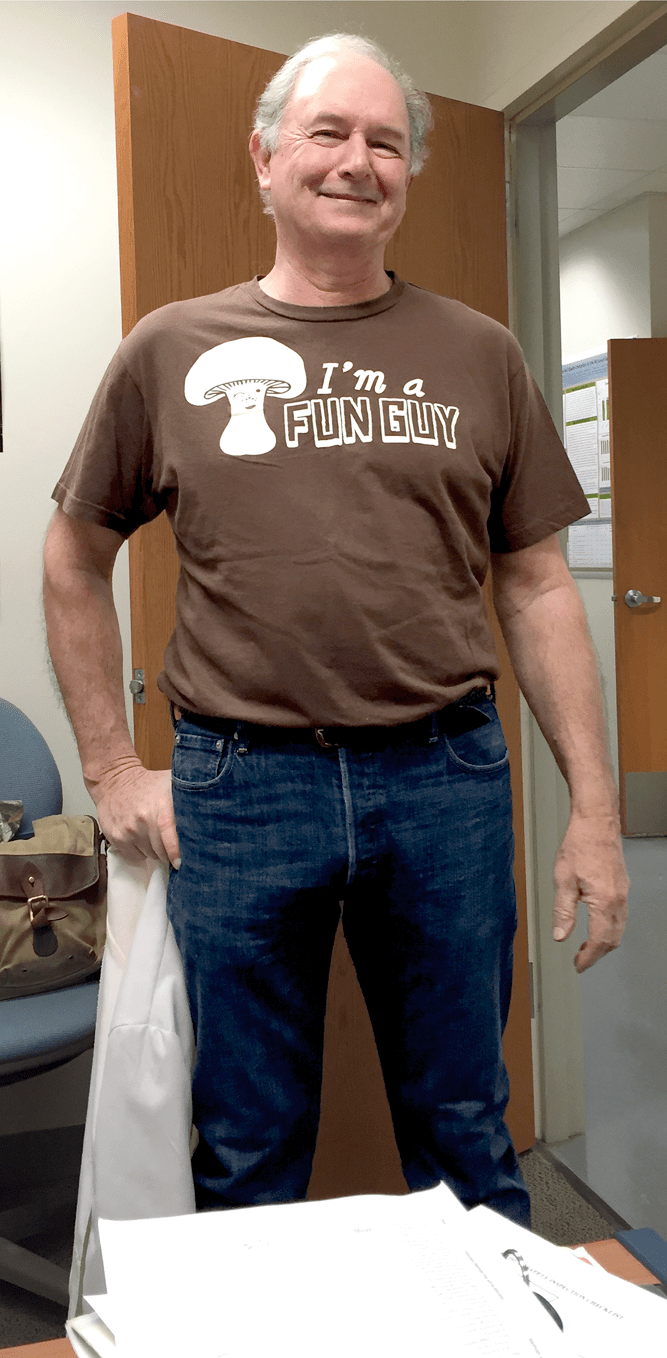
Last year, the ASA Board of Directors completed an extensive re‐imagining of the ASA vision and six supporting strategic objectives. As I recently mulled over ways to support the six objectives in my day‐to‐day life, I found myself reflecting on the life and career of one of my Ph.D. advisers, Dr. Robert “Bob” Kremer. He touched countless lives through his work in agronomy and effortlessly embodied the values and goals defined in the ASA strategic plan. “Dr. Bob” passed away in March, leaving a big hole in the hearts of agronomists and soil scientists worldwide (see the In Memoriam on p. 39 of this issue).
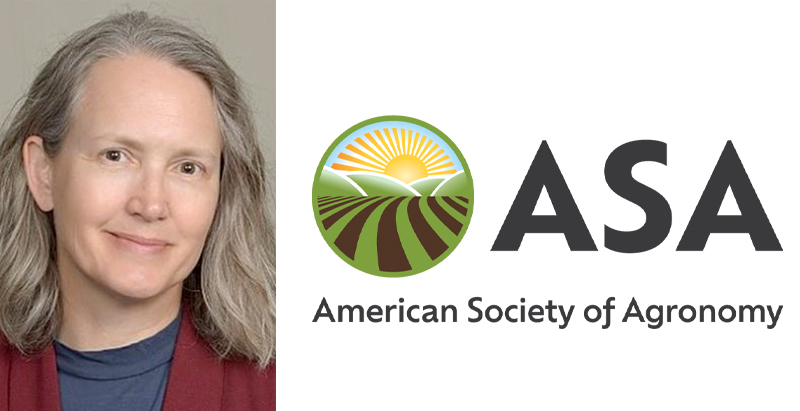
Build Awareness and Appreciation of Agronomy
In our strategic plan, the first objective is to build awareness and appreciation of agronomy. Bob's career was all about sharing his love of agronomy. He had a drive to share his knowledge and energy with others. He traveled the world to give workshops to scientists and farmers. His enthusiasm inspired people to want to learn more. He hosted students from far and wide, contributing to more than 100 graduate student degrees. He enthusiastically taught classes, including Environmental Soil Microbiology, Advanced Weed Science, and Sustainable Agriculture, often without compensation. If he saw a gap, he filled it…without complaint.
Extend Membership Value, Including New Audiences
Our second objective is to extend membership value, including new audiences. It's not hard to link Bob's life to this objective; he was a visionary and creative agronomist. He supported new ideas and innovative approaches, serving as a charter member of multiple “unconventional” ASA communities, including the Solar Corridor, Soil Health, and Cover Crop Communities. He embraced new ideas. He brought scientists with different perspectives to the table who then worked together to solve sometimes controversial problems. He also understood the importance of connecting the science to practitioners and farmers. He wrote more than 60 articles for trade or “popular” journals, translating his science to reach new audiences.
Continuing Education
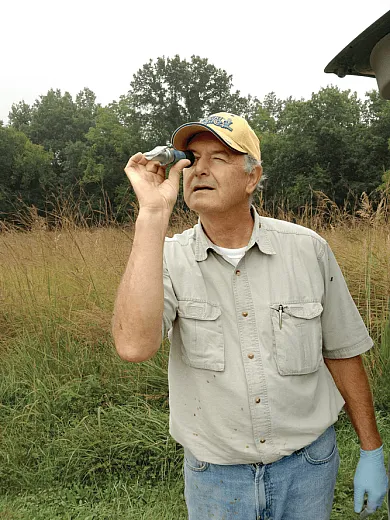
Our third objective is continuing education. One of seven siblings raised on a diversified crop and livestock farm in Frankenstein, MO, Bob never strayed far from his farming roots. He loved working with students and farmers. He roamed the country to share his knowledge of soils and agronomy. He knew how to share his technical expertise at all levels and how to deliver information based on the needs of the audience. He loved soil pits as hands‐on demonstrations of how management impacted soils and crop growth, and he would pack up his microscope to show farmers firsthand what was living in their soil. He organized and participated in farmer workshops, and as far as I could tell, he preferred those workshops to scientific conferences.
Improve the Desirability of Publishing in Our Journals
Our fourth objective is to improve the desirability of publishing in our journals. Bob held our Society journals in the highest esteem. As a graduate student, I didn't know one journal from another, but he guided all of us to aim high and publish in Agronomy Journal or other Society journals. He also supported Society journals by serving as a guest editor of multiple issues. I still primarily submit my work to our Society journals. For me, they are the “go‐to” journals for all things crops, soils, and agronomy. Encouraging students and early career scientists to publish in our journals will ensure that ASA journals can continue to serve audiences all over the world and remain top‐tier in our discipline.
Expand Our Global Footprint
Our fifth objective is to expand our global footprint. Bob was a global agronomist. His 60+ invited presentations on the importance of the soil microbiome took him to all corners of the globe, including the Ukraine, Australia, Austria, Brazil, Canada, France, Korea, New Zealand, Poland, and Switzerland. He served as an examiner for graduate students working in India, Pakistan, Saudi Arabia, Tunisia, and Brazil. He loved hosting international scientists, and I recall helping him give lab tours and demonstrations to visiting scientists and farmers from every continent (except, perhaps, Antarctica). His willingness to share his time and expertise will have a lasting impact around the world.
Workforce Development
Our final objective is workforce development. Bob's connection to ASA began in 1971 with a student award that recognized his talent and promise as a future scientist. From there, he continued as an active member of ASA for 51 years. Establishing Society connections and creating a career home for students through mentorship and Society engagement is key to the future success of ASA. In my case, without Bob's influence, I would not be working in the field of agronomy. I might not have finished my Ph.D., found gainful employment, or become ASA president. I was one of those students without a master plan, new to studying soils. If Bob hadn't given me the opportunity to work in his lab and provide a window into what it was like to study agronomy, I wouldn't be here today. He made his job look fun and interesting, and I soon decided that I wanted to model my career after his: working in the lab and field and pursing answers to applied questions in agronomy.
Our Vision
Together, these six objectives support our ASA vision: to be the preeminent community for diverse agricultural professionals leading education and collaboration with partners to address food and environmental challenges by connecting the science of agronomy to its practical application. Dr. Bob's career provides just one story of how we impact our disciplines not only through great scientific breakthroughs, but through the small decisions we make on a daily basis. Bob valued diversity and inclusion long before the concept of DEI coalesced into what it represents today. His open‐door, open‐lab policy and welcoming demeanor attracted students from across the globe and from all backgrounds. He invited anyone and everyone with an interest in soils and agriculture to his lab to learn about soil microbiology and the beautiful and amazing world beneath our feet.
We didn't build our careers alone, and it is up to us to “pass the baton” as Dr. Chavonda Jacobs‐Young eloquently said in her keynote speech at our 2023 Annual Meeting. It is critical that we open doors and offer opportunities to students, share knowledge, and provide guidance and support. Dr. Bob handed off more batons than I can count, and his legacy endures in the lives of everyone who had the privilege to know and work with him. Regardless of where you are in your agronomic journey, I challenge you to think about how you can support the shared vision of ASA and implement our six strategic objectives in your life to inspire others to follow in your footsteps, and pursue careers in agronomy, crop science, and soil science.
Text © . The authors. CC BY-NC-ND 4.0. Except where otherwise noted, images are subject to copyright. Any reuse without express permission from the copyright owner is prohibited.



